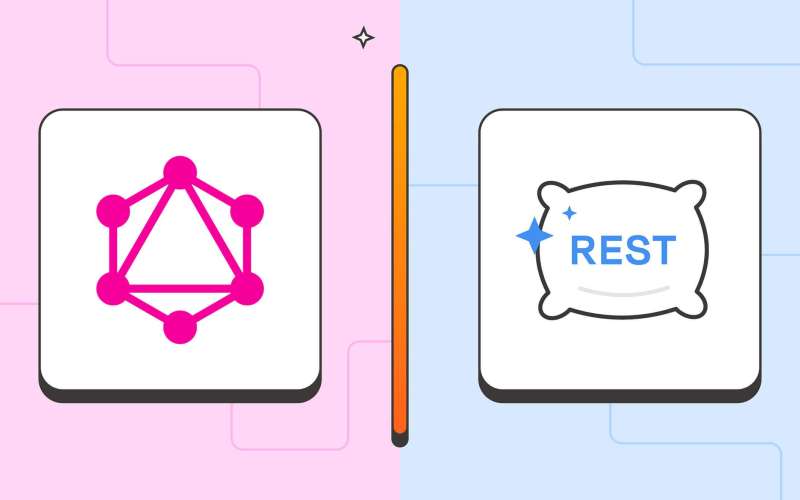API Development: REST vs. GraphQL – Which One Should You Use?

REST vs. GraphQL: Which API architecture is right for you? Learn key differences, benefits, and best use cases for web development.
Introduction
APIs (Application Programming Interfaces) are the backbone of modern web and mobile applications, allowing systems to communicate efficiently. REST and GraphQL are two of the most popular API architectures. While REST (Representational State Transfer) is a traditional, widely adopted approach, GraphQL, developed by Facebook, offers a more flexible alternative. In this article, we’ll explore their differences, advantages, and when to use each.
What is REST?
Definition
REST is an architectural style for designing networked applications. It relies on HTTP methods (GET, POST, PUT, DELETE) and follows a client-server model.
Key Features of REST APIs
✅ Uses standard HTTP methods
✅ Based on a stateless architecture
✅ Uses endpoints (URLs) for different resources
✅ Typically returns data in JSON or XML format
Advantages of REST
- Scalability – Well-suited for large-scale applications
- Caching – Improves performance and reduces load
- Easy to implement – Follows simple HTTP-based architecture
- Widespread support – Works across all major programming languages
Challenges of REST
❌ Over-fetching or under-fetching data – Fixed endpoints return predefined data, sometimes more or less than needed
❌ Multiple requests required – Clients may need to make multiple calls to retrieve related data
❌ Not always optimized for modern apps – REST can be inefficient for real-time applications
What is GraphQL?
Definition
GraphQL is a query language and runtime for APIs, allowing clients to request only the data they need. Instead of multiple endpoints, it provides a single API entry point.
Key Features of GraphQL
✅ Clients define the data structure they need
✅ Single endpoint for all queries
✅ Supports real-time updates with subscriptions
✅ Strongly typed schema for consistency
Advantages of GraphQL
- Flexible data retrieval – Fetch only the necessary data
- Faster response times – Avoids over-fetching or under-fetching
- Single request – Combines multiple queries into one call
- Real-time support – Works well with WebSockets for real-time apps
Challenges of GraphQL
❌ More complex implementation – Requires schema design and resolvers
❌ Caching is difficult – Unlike REST, GraphQL doesn’t rely on standard HTTP caching
❌ Higher learning curve – Requires understanding of queries, mutations, and resolvers
REST vs. GraphQL: A Side-by-Side Comparison
| Feature | REST API | GraphQL API |
|---|---|---|
| Architecture | Resource-based | Query-based |
| Endpoints | Multiple | Single |
| Data Fetching | Fixed structure | Flexible, user-defined |
| Performance | Can lead to over-fetching | Optimized requests |
| Caching | Easy with HTTP | Requires custom caching |
| Use Cases | Traditional web & mobile apps | Modern, real-time, data-intensive apps |
| Complexity | Easier to implement | More complex setup |
When to Use REST vs. GraphQL
Choose REST if:
✔ You need a simple, scalable API
✔ Your application follows a resource-based architecture
✔ You want built-in HTTP caching
✔ You are working on a traditional web or mobile app
Choose GraphQL if:
✔ You need to fetch specific data with minimal requests
✔ Your app requires real-time updates (e.g., chat apps, live feeds)
✔ You want more flexibility for frontend developers
✔ Your API is data-heavy, and you want to reduce over-fetching
Conclusion & Future Scope
Both REST and GraphQL have their strengths and ideal use cases. REST remains the standard for simple and scalable APIs, while GraphQL offers flexibility and efficiency for modern applications. The best choice depends on your project requirements, data needs, and development goals. As API technologies evolve, we may see more hybrid approaches that combine REST for standard operations and GraphQL for advanced querying.
Keywords
REST vs GraphQL, API development, GraphQL vs REST API, REST API benefits, GraphQL use cases, web API comparison, best API architecture, backend development.



Write A Comment
No Comments